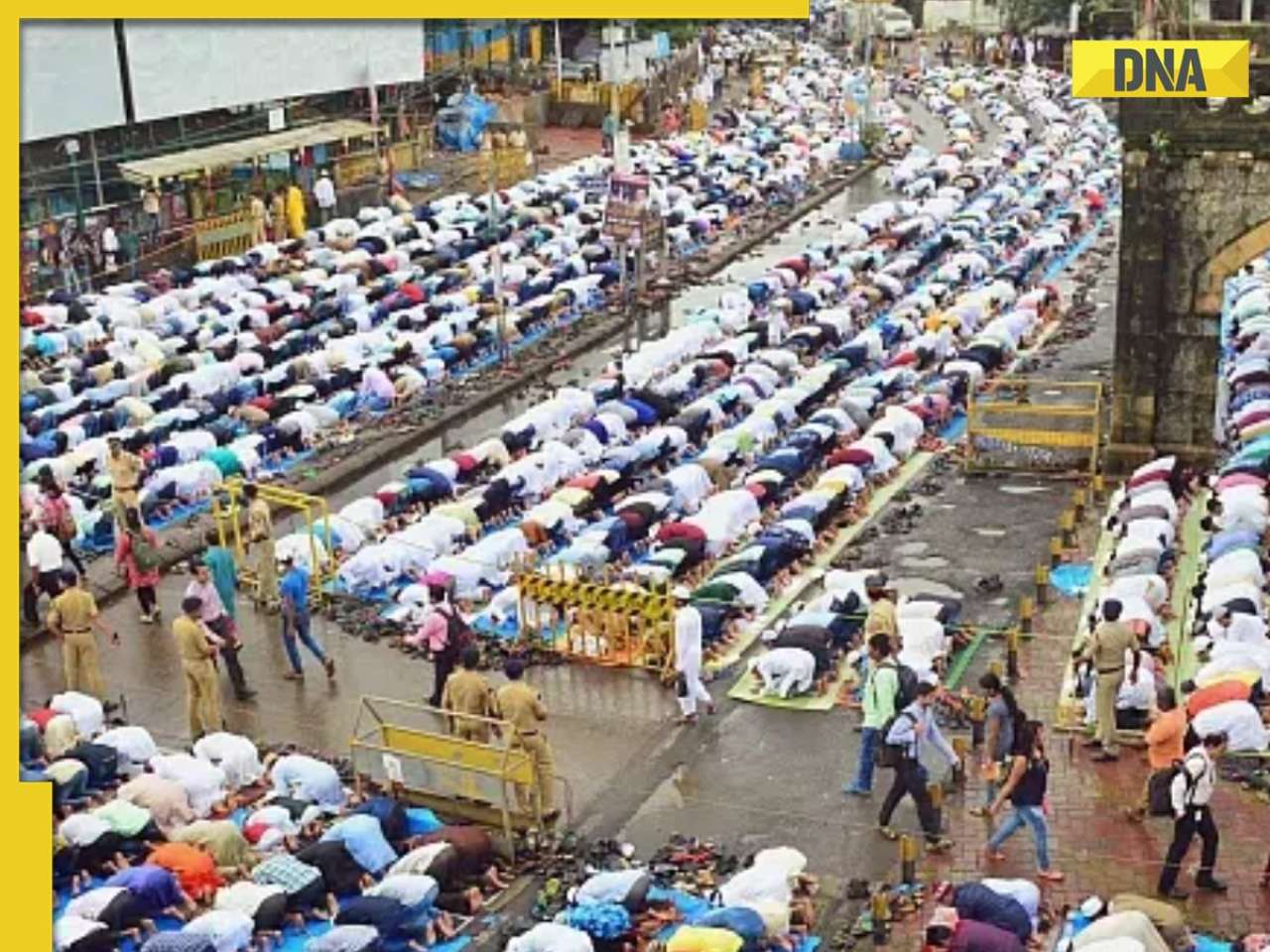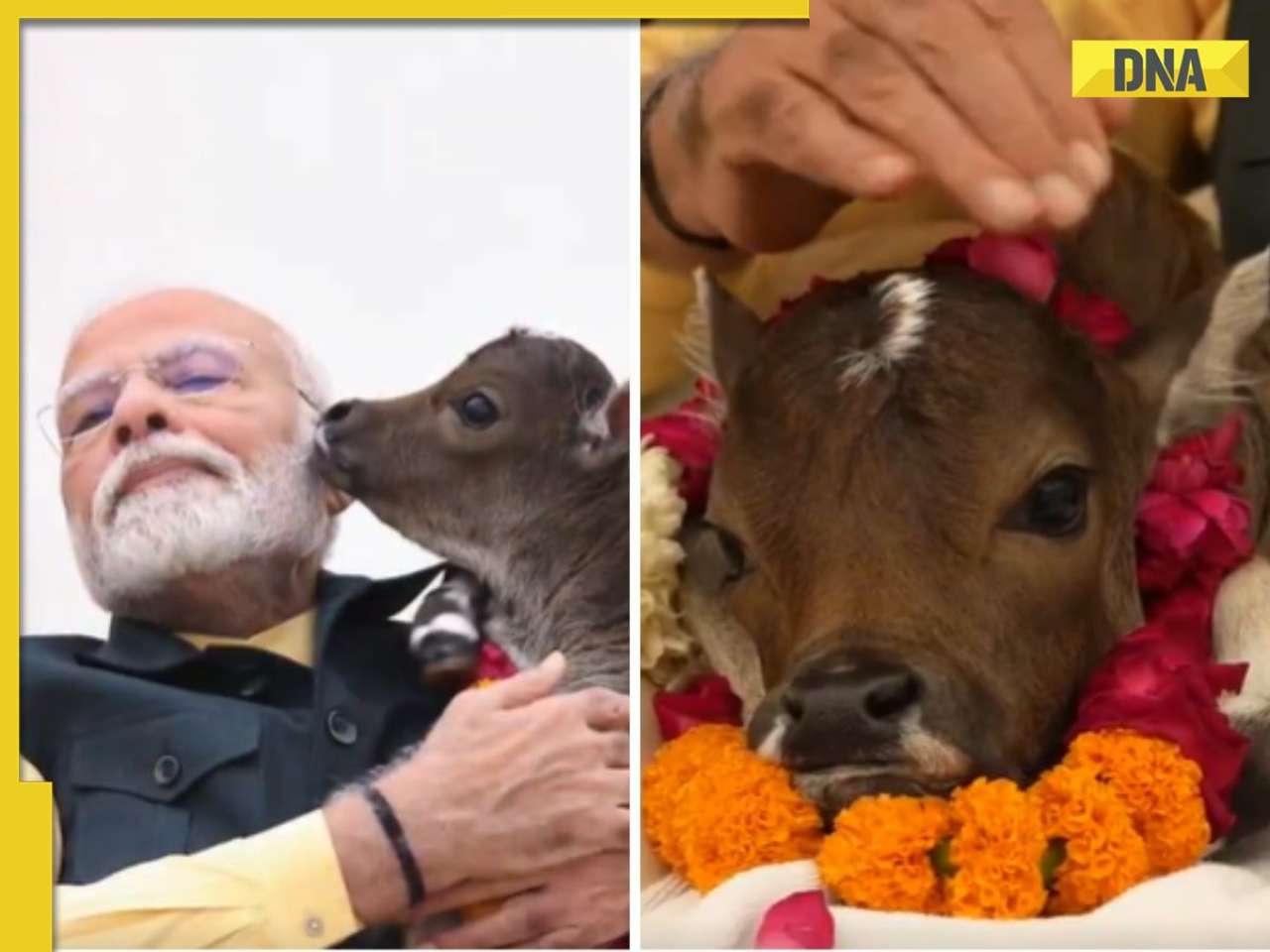With a long list of drawbacks, the farmers of a small village, Khoraj, near Sanand are giving up Bt cotton and tilting towards crops like paddy, castor, jowar and others.
With a long list of drawbacks, the farmers of a small village, Khoraj, near Sanand are giving up Bt cotton and tilting towards crops like paddy, castor, jowar and others. This small village has made a major shift from cotton to paddy, due to easy availability of water. For the past many years, Gujarat has seen a rise in area under cotton cultivation.
It is estimated that cotton sowing is being carried out in around 30 lakh hectares of land this year, which translates into more than one-third of the total land where kharif sowing is normally undertaken.
But in Khoraj almost 90% sowing has shifted to paddy in the past couple of years. This year, farmers are expecting good profit from paddy instead of cotton. Farmers in Khoraj said that Narmada canal and good rains have increased water availability.
"Earlier, we went for Bt cotton but it needs lots of pesticide and water. This in turn hardened the soil. So around three to four years ago, farmers of Khoraj shifted from Bt cotton to Kalyan cotton," said Raghu Jadav. He said now they are moving to paddy. Farmers said that the easy availability of water has made them look at other crops for better profits. Now, of the total 5,000 bigha under cultivation, over 90% is used for paddy production. Gambhir Jadav who has around 200 bigha of land in Khoraj said earlier rains were normal and labour was easily available which made cotton a viable option. "Now rains are good but very uncertain and last longer which spoils the standing cotton crop. So we mainly sow paddy and castor," he said.
"Cotton being a cash crop gives more profit. But past experience has taught us that the crop is often lost due to unseasonal rains, disease or limited availability of water," said Hitesh Chavda. He has around 100 bigha of agricultural land, said that between 2008 and 2010, over 50% of his cotton crop failed due to unseasonal rains and various diseases.
"In case of cotton, the crop cycle takes eight months and if it fails a farmer cannot sow anything else as water is not available," he said.
Jamsangh Umarsangh, who owns 150 bigha of land said good rain for the past many years has made them shift to paddy. "The arrival time for paddy is three to four months. By Diwali, we will be enchasing paddy and, post-Diwali we will start sowing the second kharif crop. Similarly, in summers too we can go for jowar, castor or any other crop," said Umarsangh. The farmers of Khoraj believe that if rains remain bountiful, their counterparts across the state will have to shift to other crops as cotton will not be feasible any more.
![submenu-img]() Squid Game 'copied' Sanjay Dutt-starrer Luck, alleges director Soham Shah; Netflix shoots back: 'We intend to...'
Squid Game 'copied' Sanjay Dutt-starrer Luck, alleges director Soham Shah; Netflix shoots back: 'We intend to...'![submenu-img]() Maharashtra govt reschedules Eid-e-Milad holiday in Mumbai from Sept 16 to…
Maharashtra govt reschedules Eid-e-Milad holiday in Mumbai from Sept 16 to…![submenu-img]() 'Vinesh Phogat didn't want to...': Lawyer Harish Salve on wrestler's Paris Olympics medal saga
'Vinesh Phogat didn't want to...': Lawyer Harish Salve on wrestler's Paris Olympics medal saga![submenu-img]() PM Modi welcomes baby calf at his residence, names it 'Deepjyoti': Know what it means
PM Modi welcomes baby calf at his residence, names it 'Deepjyoti': Know what it means![submenu-img]() Longest railway station name in India has 57 letters, it is located in…
Longest railway station name in India has 57 letters, it is located in…![submenu-img]() PM Modi का झारखंड, गुजरात और ओडिशा में तीन दिवसीय दौरा, जनता को इन खास परियोजनाओं की मिलेगी सौगात
PM Modi का झारखंड, गुजरात और ओडिशा में तीन दिवसीय दौरा, जनता को इन खास परियोजनाओं की मिलेगी सौगात![submenu-img]() Rajasthan News: Bundi में बड़ा सड़क हादसा, 6 लोगों की मौत, 3 गंभीर रूप से घायल
Rajasthan News: Bundi में बड़ा सड़क हादसा, 6 लोगों की मौत, 3 गंभीर रूप से घायल![submenu-img]() Chandigarh ग्रेनेड अटैक के दूसरे आरोपी को पुलिस ने दबोचा, दिल्ली में छुपा हुआ था बदमाश
Chandigarh ग्रेनेड अटैक के दूसरे आरोपी को पुलिस ने दबोचा, दिल्ली में छुपा हुआ था बदमाश ![submenu-img]() Meerut Building Collapse में बढ़ता जा रहा मरने वालों का आंकड़ा, अब तक 10 की गई जान
Meerut Building Collapse में बढ़ता जा रहा मरने वालों का आंकड़ा, अब तक 10 की गई जान ![submenu-img]() CBSE Central Sector Scholarship 2024: CBSE के स्कॉलरशिप के लिए आवेदन शुरू, मेधावी छात्र इस तारीख तक करें अप्लाई
CBSE Central Sector Scholarship 2024: CBSE के स्कॉलरशिप के लिए आवेदन शुरू, मेधावी छात्र इस तारीख तक करें अप्लाई![submenu-img]() Ford to return to India after 2 years with reopening of....
Ford to return to India after 2 years with reopening of....![submenu-img]() Maruti Suzuki launches new Swift CNG, check price, mileage, other features
Maruti Suzuki launches new Swift CNG, check price, mileage, other features![submenu-img]() ‘30 LPA, 3BHK, no in-laws’: Woman earning Rs 1.32 lakh salary lists demands for future husband, netizens say...
‘30 LPA, 3BHK, no in-laws’: Woman earning Rs 1.32 lakh salary lists demands for future husband, netizens say...![submenu-img]() In a big EV push, Centre launches Rs 10900 crore PM E-Drive scheme to replace…
In a big EV push, Centre launches Rs 10900 crore PM E-Drive scheme to replace…![submenu-img]() World’s longest car has helipad, swimming pool, mini-golf course, can seat over…; it cost…
World’s longest car has helipad, swimming pool, mini-golf course, can seat over…; it cost…![submenu-img]() NEET SS 2024: Tentative schedule out, exam likely on...
NEET SS 2024: Tentative schedule out, exam likely on...![submenu-img]() Meet man, popular online tutor who cracked UPSC in 1st attempt, resigned as IAS officer after 1 year due to…
Meet man, popular online tutor who cracked UPSC in 1st attempt, resigned as IAS officer after 1 year due to…![submenu-img]() Meet man, who worked as coolie, later cracked UPSC exam to become IAS officer, he was killed by...
Meet man, who worked as coolie, later cracked UPSC exam to become IAS officer, he was killed by...![submenu-img]() Meet IIT-JEE topper with AIR 1, went to IIT Bombay, got job with Rs 70 lakh salary, left it for...
Meet IIT-JEE topper with AIR 1, went to IIT Bombay, got job with Rs 70 lakh salary, left it for...![submenu-img]() Meet man, who lost father at 5, grew up in orphanage, didn't crack UPSC exam but became IAS officer, is posted at..
Meet man, who lost father at 5, grew up in orphanage, didn't crack UPSC exam but became IAS officer, is posted at..![submenu-img]() Jaishankar: EAM Dr. S. Jaishankar On India-China Relations & Disengagement Problems | Ladakh
Jaishankar: EAM Dr. S. Jaishankar On India-China Relations & Disengagement Problems | Ladakh![submenu-img]() Trump vs Harris: Donald Trump Says He Will Not Debate Kamala Harris Again | US Presidential Debate
Trump vs Harris: Donald Trump Says He Will Not Debate Kamala Harris Again | US Presidential Debate![submenu-img]() Delhi Gym News: Afghan-Origin Gym Owner Shot Dead In Delhi | Caught On CCTV
Delhi Gym News: Afghan-Origin Gym Owner Shot Dead In Delhi | Caught On CCTV![submenu-img]() Malaika Arora Father Death: Anil Mehta's Final Words To His Daughter Malaika Arora
Malaika Arora Father Death: Anil Mehta's Final Words To His Daughter Malaika Arora![submenu-img]() Chandigarh Blast: Grenade Explosion In Sector 10; Auto Driver Arrested, Investigation Ongoing
Chandigarh Blast: Grenade Explosion In Sector 10; Auto Driver Arrested, Investigation Ongoing![submenu-img]() Meta CEO Mark Zuckerberg reveals biggest mistake of his career, claims it is...
Meta CEO Mark Zuckerberg reveals biggest mistake of his career, claims it is...![submenu-img]() Meet Indian man, who left his job in US, started business from Rs 40000, now leads company worth Rs 18765 crore, he is..
Meet Indian man, who left his job in US, started business from Rs 40000, now leads company worth Rs 18765 crore, he is..![submenu-img]() Meet man, a billionaire, who hosts Kim Kardashian, Leonardo DiCaprio, Katy Perry on his superyacht for...
Meet man, a billionaire, who hosts Kim Kardashian, Leonardo DiCaprio, Katy Perry on his superyacht for...![submenu-img]() Meet Indian-born engineer behind Amazon's Alexa, now among TIME100 most influential people in AI 2024 list, he is...
Meet Indian-born engineer behind Amazon's Alexa, now among TIME100 most influential people in AI 2024 list, he is...![submenu-img]() Meet Indian genius, went to IIT, studied with Shah Rukh Khan, tragically lost his life due to...
Meet Indian genius, went to IIT, studied with Shah Rukh Khan, tragically lost his life due to...![submenu-img]() Bollywood's highest-paid bodyguards earn in crores each year; here's how much Salman, SRK pay their trusted protectors
Bollywood's highest-paid bodyguards earn in crores each year; here's how much Salman, SRK pay their trusted protectors![submenu-img]() 6 most haunted places in the world
6 most haunted places in the world![submenu-img]() Good news for Reliance Jio users: Mukesh Ambani offers 5 best Jio plans under Rs 300 with unlimited...
Good news for Reliance Jio users: Mukesh Ambani offers 5 best Jio plans under Rs 300 with unlimited...![submenu-img]() This Bollywood outsider sang at weddings, in trains, was rejected from TV shows; now gives Rs 100-crore blockbusters
This Bollywood outsider sang at weddings, in trains, was rejected from TV shows; now gives Rs 100-crore blockbusters ![submenu-img]() In pics: Priyanka Chopra dons sizzling bikinis, enjoys yacht time with Nick Jonas, Malti Marie on European vacation
In pics: Priyanka Chopra dons sizzling bikinis, enjoys yacht time with Nick Jonas, Malti Marie on European vacation![submenu-img]() Maharashtra govt reschedules Eid-e-Milad holiday in Mumbai from Sept 16 to…
Maharashtra govt reschedules Eid-e-Milad holiday in Mumbai from Sept 16 to…![submenu-img]() Lucknow: Section 163 imposed in UP capital till this date, reason is...
Lucknow: Section 163 imposed in UP capital till this date, reason is...![submenu-img]() Ayushman Bharat health insurance for senior citizens: Eligibility, benefits, how to apply
Ayushman Bharat health insurance for senior citizens: Eligibility, benefits, how to apply![submenu-img]() Picture of Lord Ganesha’s idol in police van sparks row in Bengaluru: Here's what we know so far
Picture of Lord Ganesha’s idol in police van sparks row in Bengaluru: Here's what we know so far![submenu-img]() Delhi records year's cleanest air quality as AQI drops to...
Delhi records year's cleanest air quality as AQI drops to...














































)
)
)
)
)
)
)
)
)
)
)
)
)
)





)
)
)
)
)
)